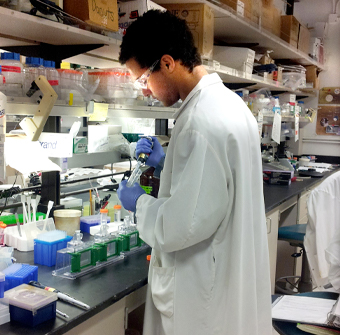PROJECT DESCRIPTION
INSTRUCTORS
SCHOOL SITE
LEVEL
SUBJECTS
ELECTRICITY USAGE
LESS THAN FIVE MATERIALS
TEACHERS NEEDED
BOOK CHAPTER

“Could we make a
yearbook of internships?”
Randy Scherer had been teaching eleventh graders, who took two afternoons a week out of school for an internship, for several years. He was looking to understand what students communicated about the relationship between school and the world of work, so that they could authentically integrate their internship experiences into their everyday learning.
Pursuing the question in his M.Ed research at the HTH Graduate School, he realized that in order to engage in deeper reflection, students needed to generate the raw materials by documenting their experiences in multiple ways—while at internship, they would take photos, interview their mentors, maintain an online journal, and give a presentation of learning.
Initially, Randy proposed to his class that they bring all of this together in a class website with photos, interviews, documentary video, etc. The students were not impressed.
One student, Sydney Lampe, raised her hand, and asked “Could we make a yearbook of internships?” Intrigued, Randy pressed for more, and she explained that since they had been separated for this time, and not with their friends, what she really wanted was a book that captured everyone’s experience so she could see it, and they could remember it. “Obviously, I was in,” said Randy.
Want to see the whole project? Click the button to download the pages from the book that discuss this project!
Want to see the whole project? Click the button to download the pages from the book that discuss this project!

During the internship, the main requirement for students was that they develop a project at their work site and complete it. To facilitate deeper reflections, Randy designed several mini-projects:
When the students returned from their internship, they spent the remainder of the semester producing their edition of Ampersand: The Journal of School and Work. Students surveyed each other’s photo essays and interviews, and proposed personal topics and themes to pursue in their edition of the book, which tended to explore how identity, education, and careers intersect for each individual. The first class chose the title Ampersand, because they realized that in their exploration of life beyond school they were adding new elements to their identity.
Exhibiting student writing is a little different than exhibiting other project-based student work, according to Randy. Professional writers rarely exhibit their work in the way of a science fair or art exhibition, he notes. “But every day of the week, writers exhibit their work in books, magazines, newspapers … ” The key to making student publishing a high stakes and professional undertaking is to have an authentic audience. At the end of each semester, the class held a book release party for Ampersand, where their families and mentors could get their copies of the books, listen to author talks, and learn the reflective and writing process the students experienced.
More importantly, after the first year, they identified three distinct audiences for the journal. The first audience, as Sydney initially pointed out, was the students themselves—they got a memento of their friends’ individual experiences and reflections. The second audience was current and potential internship mentors—the reflections and interviews helped them understand students’ struggles and strengths and prepared them to be better mentors for future interns. The final audience was rising IIth graders, who read past year’s journals, grounding them in what to expect and what was possible for their own internship experience.

